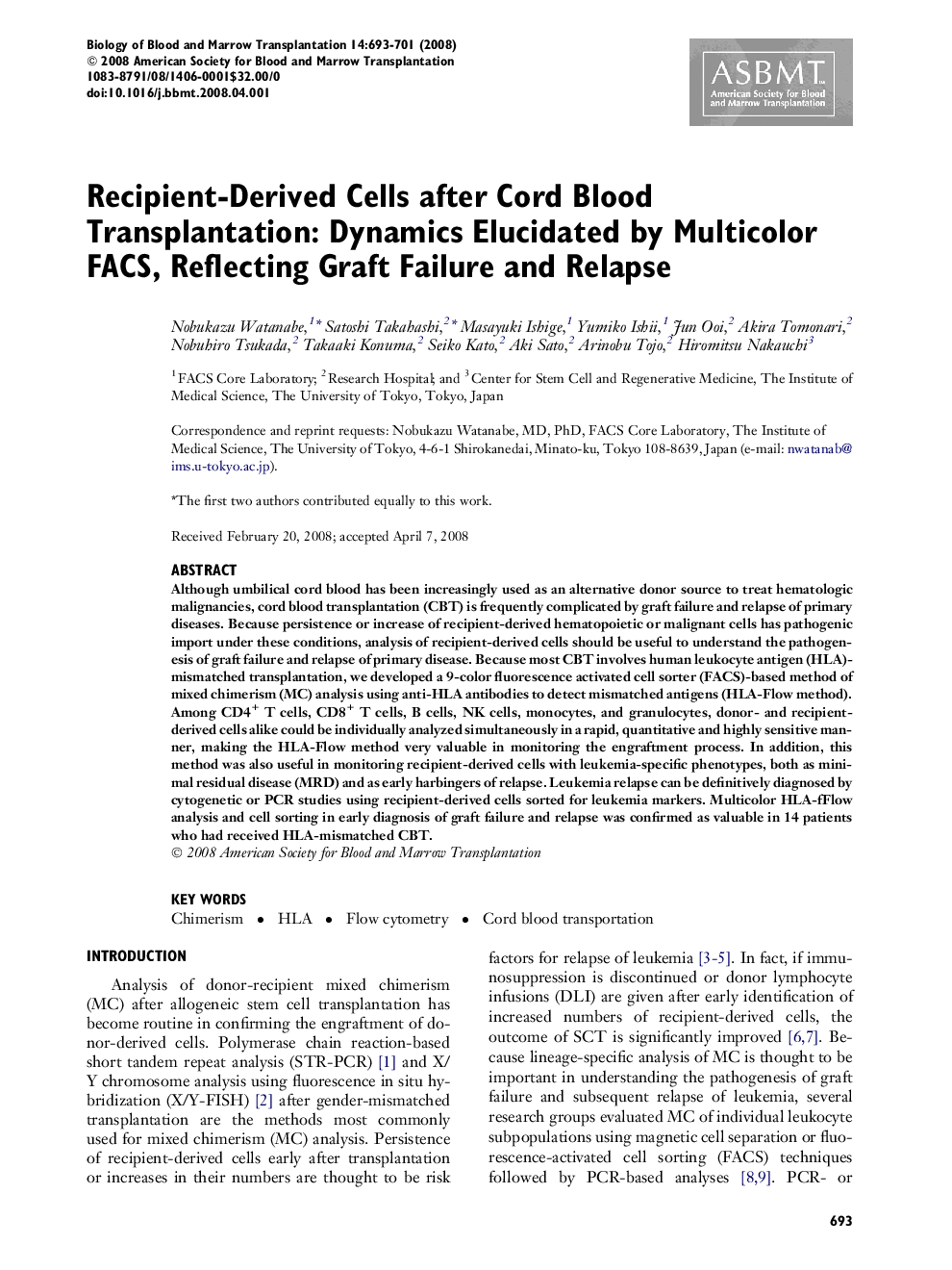| Article ID | Journal | Published Year | Pages | File Type |
|---|---|---|---|---|
| 2104098 | Biology of Blood and Marrow Transplantation | 2008 | 9 Pages |
Although umbilical cord blood has been increasingly used as an alternative donor source to treat hematologic malignancies, cord blood transplantation (CBT) is frequently complicated by graft failure and relapse of primary diseases. Because persistence or increase of recipient-derived hematopoietic or malignant cells has pathogenic import under these conditions, analysis of recipient-derived cells should be useful to understand the pathogenesis of graft failure and relapse of primary disease. Because most CBT involves human leukocyte antigen (HLA)-mismatched transplantation, we developed a 9-color fluorescence activated cell sorter (FACS)-based method of mixed chimerism (MC) analysis using anti-HLA antibodies to detect mismatched antigens (HLA-Flow method). Among CD4+ T cells, CD8+ T cells, B cells, NK cells, monocytes, and granulocytes, donor- and recipient-derived cells alike could be individually analyzed simultaneously in a rapid, quantitative and highly sensitive manner, making the HLA-Flow method very valuable in monitoring the engraftment process. In addition, this method was also useful in monitoring recipient-derived cells with leukemia-specific phenotypes, both as minimal residual disease (MRD) and as early harbingers of relapse. Leukemia relapse can be definitively diagnosed by cytogenetic or PCR studies using recipient-derived cells sorted for leukemia markers. Multicolor HLA-fFlow analysis and cell sorting in early diagnosis of graft failure and relapse was confirmed as valuable in 14 patients who had received HLA-mismatched CBT.
